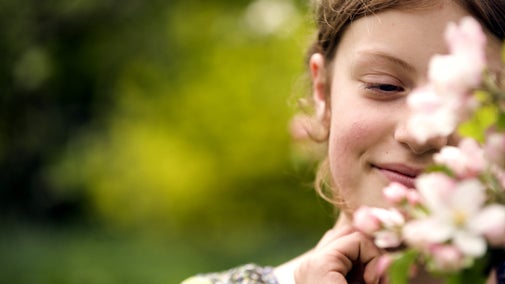
Discover more at Kingston Lacy
Find out when Kingston Lacy is open, how to get here, the things to see and do and more.

The passions and obsessions of William John Bankes shaped the Kingston Lacy we see today. Generations of the Bankes family contributed to the evolution of the estate, but it was William John who implemented some of the most fundamental changes. Find out how he set about re-imagining Kingston Lacy as a complete artwork; a treasure house of extraordinary art with interiors inspired by Venetian palaces.
William John was a traveller, collector and talented draughtsman with an eye for beauty. When he inherited Kingston Lacy in 1834, he considered it an awkward hybrid. The renovations his father had made in the late 18th century were no longer in fashion. They had also altered the aesthetic of the original Restoration mansion that was built for the family after the destruction of their home at Corfe Castle during the Civil War.
William John set about making some dramatic changes. He instructed the architect Sir Charles Barry (who was involved in the rebuilding of the Houses of Parliament) to remodel the house and clad the red-brick exterior in local Chilmark stone.
He also collected Kingston Lacy’s most important works of art. These include a group of Spanish paintings, displayed in a ‘golden room’ setting, which he acquired while following the Duke of Wellington’s campaign in the Spanish Peninsular War (c.1812-14). In Egypt, William encountered the Philae obelisk, which was later transported to Kingston Lacy with the aid of Wellington’s gun carriage.

Bankes travelled extensively in Europe and the Near East, particularly Egypt. He explored the country and many of its ancient sites, sailing up the Nile as far as Nubia in modern-day Sudan.
He developed a fascination with the antiquities of Egypt, which were little known by European academics at that time. He built a huge portfolio of detailed and scholarly notes, drawings, and watercolours – some made by him, others by draughtsmen at his service, that recorded buildings, inscriptions and excavations.
These complement the wide range of artefacts he acquired while he was there; among them the Philae obelisk, whose inscription played a key role in the deciphering of Egyptian hieroglyphics in the 1820s.
William John never realised his full vision for Kingston Lacy. In 1841 he went into voluntary exile in Venice after he was charged for the second time with same-sex acts. At the time, homosexual relationships between men were punishable by death.
During his exile, William John continued to collect compulsively and commission art, marble carvings and furniture. He sent them back to his siblings in Dorset with detailed instructions for their display. But he was never able to live at Kingston Lacy again, and in 1855 William John died whilst still in exile.
It's thought that William John risked his life to visit Kingston Lacy at least once before his death. In one of his letters home, he references a minute detail on one of the doors and asks for it to be fixed. Such a detail could only have been seen in person.

Today Kingston Lacy is home to one of the National Trust’s most important art collections. Rubens, Titian and Sebastiano are among the great Western artists whose works decorate the walls. But Kingston Lacy is much more than a house and art collection. It is a garden that was celebrated in the early 20th century as a horticultural masterpiece; an 18th-century parkland (now home to a herd of rare Red Devon cattle); and a living landscape rich in wildlife and nature, where tenanted farms meet pre-history at Badbury Rings.
Kingston Lacy is the heart of the ‘richest ever gift’ to the National Trust. The 8,500-acre estate is part of the 16,000-acre Bankes estate that was bequeathed in 1981 by Henry John ‘Ralph’ Bankes. It is a grand estate, but it is also a proud family home. Above all, Kingston Lacy is an extraordinary legacy of people and place – an estate where a pocket of rural Dorset connects with the world on account of the curiosity, vision and creativity of its most influential owner, William John Bankes.
Bankes’ art and antiquities collection, including his substantial holdings of Egyptian artefacts, remain at Kingston Lacy. His travel manuscripts are now deposited in the Dorset History Centre in Dorchester.
Both the ancient objects and the papers have proven of huge importance to Egyptologists today.

Find out when Kingston Lacy is open, how to get here, the things to see and do and more.

Find out more about the Bankes family home. Discover art treasures and look at how a large home was used by the family and their visitors who came to stay.

Learn about some of the prized items that are housed at Kingston Lacy, several of which feature in the National Trust's book 125 Treasures.

Relax and wander the gardens to enjoy seasonal interest at any time of year, with plenty of space for children to run, skip and play, and spaces to stop along the way.

Groups of visitors are warmly welcomed by the National Trust at Kingston Lacy. Find out more about booking your tickets and the benefits you’ll get.

Conservation work is a vital part of what the National Trust does at Kingston Lacy. Discover more about our latest initiatives.

There are numerous ways that you can volunteer with the National Trust at Kingston Lacy. Find out how to join our team.

Learn about people from the past, discover remarkable works of art and brush up on your knowledge of architecture and gardens.

Explore the objects and works of art we care for at Kingston Lacy on the National Trust Collections website.